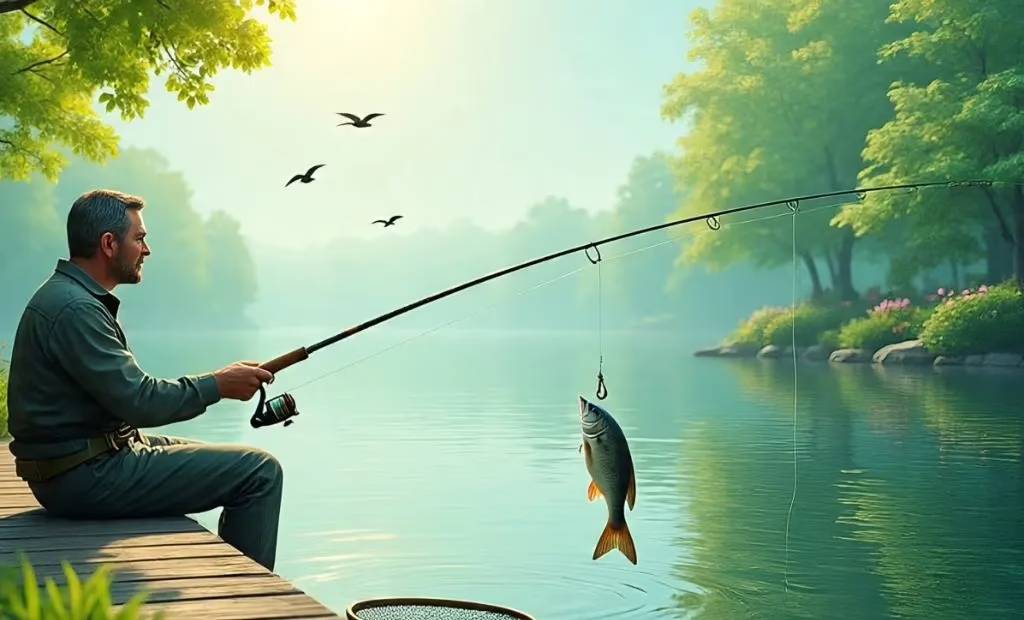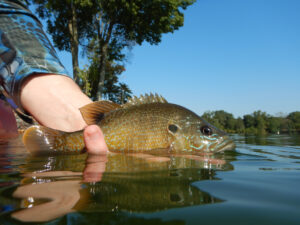Fish Fishing Pole Guide 2025: How to Choose, Use, and Master Your Rod in the U.S.
Fishing has been a beloved pastime in America for centuries, and at the center of it all is one essential tool — the fish fishing pole. Whether you’re planning to cast a line from a quiet lake dock, a rushing riverbank, or a salty pier by the ocean, your fishing experience depends heavily on having the right fishing pole and knowing how to use it.
In this guide, we’ll take you step-by-step through everything you need to know — from choosing a fish fishing pole that suits your style, to setting it up properly, and finally to mastering techniques that help you reel in your catch. If you’re in the U.S., this article is tailored to the types of fishing, waters, and species you’ll most often encounter.
What is a Fish Fishing Pole?
A fish fishing pole (commonly called a fishing rod) is a long, flexible rod designed to cast a fishing line into the water and help you reel in fish. While the term “pole” can refer to a simple stick with a line tied to it, modern fishing poles are much more advanced — offering precision, strength, and comfort.
In the United States, fishing poles come in various lengths, materials, and designs, each catering to a specific type of fishing — whether you’re after small bluegill in a pond, bass in a lake, or striped bass from the Atlantic coast.
Understanding the Parts of a Fish Fishing Pole
A fish fishing pole is made up of several key parts that work together for smooth casting and reeling. The rod blank is the main body, while the handle or grip, usually made of cork or EVA foam, gives you comfort and control. The reel seat holds your reel in place, and guides along the rod direct the fishing line. At the very end is the tip, the most sensitive part, which bends the most when you hook a fish.
Choosing the Right Fish Fishing Pole in the U.S.
Selecting the perfect fish fishing pole in the U.S. depends on where you’ll fish, the species you’re targeting, and your skill level. For freshwater spots like lakes and rivers, medium-length rods around 6–7 feet are versatile for bass, trout, and panfish, while saltwater fishing demands more durable rods to withstand corrosion and handle larger fish. Light power rods work well for smaller species, medium power for all-around fishing, and heavy power for big game. Materials like fiberglass are durable and beginner-friendly, graphite offers sensitivity for experienced anglers, and composites give a balance of both.
Matching Your Pole with the Right Reel
Pairing your fish fishing pole with the right reel is key to smooth and efficient fishing. Spinning reels are versatile and easy to use, making them ideal for beginners and most freshwater fishing. Baitcasting reels offer more control and power, perfect for experienced anglers targeting larger fish, while fly reels are designed for the unique demands of fly fishing. Always match the reel’s size and weight rating to your rod’s specifications for the best performance.
Setting Up Your Fish Fishing Pole
o set up your fish fishing pole, start by attaching the reel securely to the reel seat and threading the fishing line through each guide from the tip down. Tie on your hook or lure using a strong knot like the improved clinch or Palomar knot, then adjust the drag on your reel so it releases line under steady pressure. This simple setup ensures your rod is ready for casting and can handle the fight when a fish bites.
Mastering Casting Techniques
Learning to cast your fish fishing pole correctly is one of the most important skills for a successful fishing trip. The most common style is the overhead cast, which offers a good balance of distance and accuracy, making it ideal for open spaces. In tighter areas with trees or brush, the sidearm cast allows you to keep the line low while still reaching your target. For situations like fly fishing or fishing in narrow streams, the roll cast is useful since it doesn’t require a full backswing
Fishing Techniques for American Waters
In the U.S., fishing techniques vary depending on the species and location, but some stand out for their effectiveness. Bass fishing often uses baitcasting rods with lures like crankbaits and spinnerbaits, while trout fishing in streams and rivers calls for light spinning or fly rods with small baits or flies. For catfish, heavy rods and strong lines work best, usually with live bait or stink bait. Each method is tailored to the fish’s habits and the water type, making technique just as important as gear selection.
Step-by-Step Guide to Using Your Fish Fishing Pole in the U.S.
To get the most out of your fish fishing pole, start by choosing a good fishing spot, whether it’s a local lake, river, or coastal pier. Set up your pole by attaching the reel, threading the line through the guides, and tying on your hook or lure. Bait your hook with live bait or a lure that matches the fish you’re targeting, then cast into the water using the right technique for your location. Watch the line for any movement or feel for bites, and when a fish strikes, set the hook with a quick lift of the rod. Finally, reel in your catch smoothly, keeping steady pressure until it’s ready to land.
Maintaining Your Fish Fishing Pole
king good care of your fish fishing pole is essential if you want it to last for years and perform at its best every time you hit the water. After each fishing trip, especially if you’ve been in saltwater, rinse the entire rod with fresh water to remove dirt, sand, and salt that can cause corrosion or wear. Pay close attention to the guides — even small cracks can damage your fishing line — and replace any that show signs of wear. Keep the handle clean and dry to prevent deterioration of cork or foam grips.




